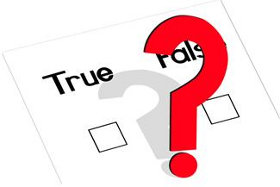
The world’s largest and most popular holiday review site, TripAdvisor, publishes millions of reviews by those who have stayed at hotels and other types of accommodation around the world. The primary reason for its popularity is that one of the best ways to find out what to expect when staying somewhere is to actually read feedback by those that have been there before. After all, a slick website and the right photos can mask things like poor quality rooms and less than desirable service.
TripAdvisor is not without controversy, as there is no mechanism in place to verify that the writer of a review actually stayed there. So there may be fake reviews creeping in, either by disgruntled staff or guests, hotels trying to sabotage their opposition, or paid reviews by accommodation providers trying to boost their standing.
One of the ways to possibly spot a fake review is by pasting the text of it into Cornell University’s Review Skeptic. They claim to use sophisticated language models that can identify whether a review is real or fake with an impressive 90% accuracy. They do state that it works best with hotel reviews worded in English.
Give it a go! Our boss here at Travel Victoria is an avid traveller, so we put his recent TripAdvisor reviews (which we know are absolutely 100% genuine) to the test. We took the 12 reviews he posted for accommodation he stayed at over the last 3 years and plugged them into Review Skeptic. The results were that out of those 12 reviews, only one was reported as being “deceptive” and the remaining 11 were reported as “truthful”.
With 92% accuracy in our real-world test of Review Skeptic, it’s quite impressive.
While Review Skeptic was able to declare that 92% of our real reviews were genuine, we obviously don’t have any fake reviews to give it to check. So we can conclude that if a review is really true, then Review Skeptic is pretty good at picking that up. We leave it up to the reader to test how well it performs with fake reviews.
Leave a Reply